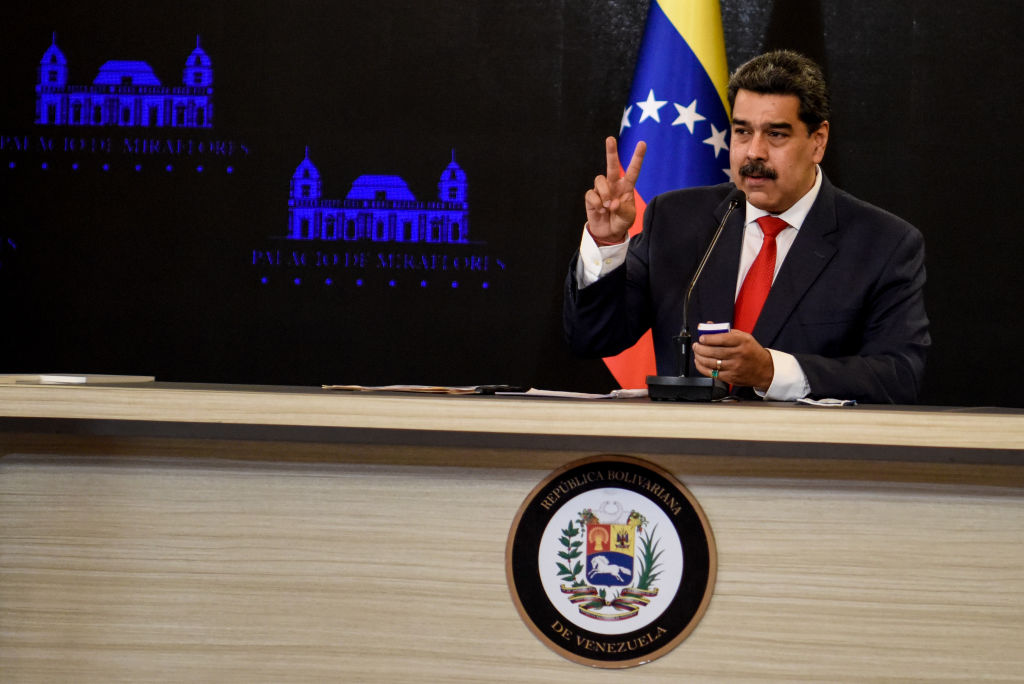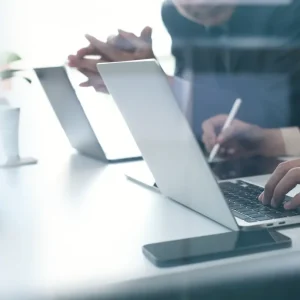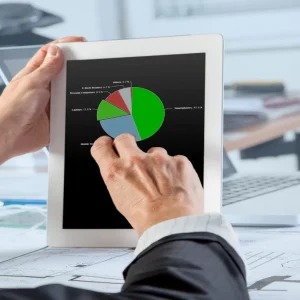
The collapse of oil prices, economic mismanagement and strict US sanctions have placed Venezuela in dire economic straits. Three years of hyperinflation have decimated its currency, the bolivar, and the majority of its citizens live in poverty. But Venezuelan president Nicolás Maduro has a new rescue plan: switching to a fully digital economy.

“This year we are going to move to a 100% digital economy,” Maduro said during his annual message to the country on 12 January. “We are going to look for different ways to combine what’s been an escape valve, the partial dollarisation of commerce, through new mechanisms of the digital economy that can allow us to strengthen our currency.”
Maduro’s comments suggest an ambition to move to a fully cashless society to escape the cycle of hyperinflation. Venezuela is a digital payments pioneer but no country has achieved an entirely digital system of currency. Is it even possible?
Digital dollarisation
‘Dollarisation’ describes the adoption the dollar (or another foreign denomination) as a de facto currency in a country to counteract hyperinflation. Maduro’s position on dollarisation has changed as the country’s economic crisis has deepened. He originally cracked down on the use of dollars, in a bid to prop up the bolivar, but he has now turned to singing its praises. “Thank God it exists,” he said in an interview last year.
People are realising that dollar notes are absolutely impractical.
Jorge Farias, CEO, Cryptobuyer
Traditional dollarisation depends on imports of paper currency, which is costly and difficult. In Venezuela, paper dollars are in too short supply to be useful, says Jorge Farias, CEO of Cryptobuyer, a fintech start-up brokering bitcoin and other cryptocurrencies across Latin America.
“There’s no monetary mass in Venezuela,” he says. “When you go to a shop or the market with a $100 note, you need to spend all of it because the merchant doesn’t have change. Since it’s an informal dollarisation, there are no one or five dollars notes. People are realising that dollar notes are absolutely impractical.”
Venezuelans have instead turned to digital payments services to make dollar transactions and, as a result, the country is digital payments pioneer.
Digital payments in Venezuela
Zelle, a peer-to-peer (P2P) payment app that is owned a coalition of US banks, has been especially popular. It accounted for 12% of commercial transactions in ten Venezuelan cities in 2019, according to local research provider Ecoanalitica, and is so popular that signs proclaiming ‘Aceptamos Zelle’ (‘We accept Zelle’) have become ubiquitous. It requires the possession of a US-based bank account, but these are common in Venezuela, especially among students. Zelle’s terms of service forbid commercial transactions, and Wells Fargo, one of the app’s owners, temporarily banned its use in Venezuela in June last year, before reintroducing it in October.
Venezuela also has the third-highest rate of cryptocurrency adoption, after Russia and Ukraine, according to research provider Chainalysis. The petro, a cryptocurrency created by the Venezuelan government in 2018 and backed by its considerable oil, gold and diamond reserves, was dismissed by foreign observers as a “scam” and has reportedly been rejected by retailers as a means of payment. But other, more established cryptocurrencies such as bitcoin and litecoin are growing in use. Cryptobuyer’s Jorge Farias says that 3% of daily payments are made in cryptocurrency.
In Venezuela, as around the world, digital payments adoption has increased during the pandemic. Sudeban, the country’s banking regulator, registered an average of 38 million peer-to-peer (P2P) mobile transactions in May 2020, a 50% increase compared to the same period the previous year. Mobile payments to companies increased 783% year-on-year. And transactions using BioPago, a biometric payment system launched in 2018, grew from 2 million in June 2019 to over 3 million transactions in the first eight days of June 2020.
What does an economy need to be fully digital?
But could Venezuela remove physical cash altogether? Establishing an entirely digital payments ecosystem would require 100% participation in some kind of banking system, says Samuel Murrant, lead analyst on payments at business intelligence provider GlobalData.
“In Sweden, for example, most people have access to a bank account. In China, everyone is on WeChat or Alipay, which are the main means of mobile payments and de facto electronic payments,” Murrant explains. “You need that pervasive system and you need everyone to be on it because if someone is missing from it and there’s no access to physical currency, then you are locking people out of the economy.”
On this front, Venezuela has a better chance than many countries. It has the highest rate of bank participation in Latin America, according to one study. And the number of adults accessing banking services has increased from 47% to 90% in the past nine years, the country’s banking regulator says.
An entirely digital national payments infrastructure would also require fail-safes, Murrant says, to keep money flowing in the event of a power outage or cyberattack. “You need either redundant systems or redundant power supplied for the system to stand up to that kind of pressure,” he explains.
One way to achieve this might be to create a decentralised payments system, so there is no single point of failure. “For a national system of money, there’s almost no chance that a government would allow a decentralised system as it will want to control all of the monetary supply,” says Murrant.
How developed is Venezuela’s ICT infrastructure?
Another prerequisite for an entirely digital system of payments is reliable, accessible and pervasive ICT infrastructure. Here, Venezuela has more catching up to do.
The country ranks 75th out of the 100 countries included in The Economist Intelligence Unit’s Inclusive Internet Index. This notes that Venezuela’s mobile infrastructure resembles that of poorer countries. And the quality of internet connections is getting worse. In 2020, average fixed internet connection speeds fell by 28%, down to 2.83mbps.
That said, 81% of Venezuela’s population has a mobile phone connection and the internet penetration rate amounts to 72%, well above the global average of 53%. Adoption of mobile internet has been driven by the popularity of social networks. Still, the Economist Intelligence Unit describes Venezuela’s policy measures to improve access to infrastructure as “middling”.
Farias says that despite the severe crisis which the country is facing, the private sector recently started to heavily invest in ICT infrastructure. Movistar, a subsidiary of Telefónica, announced last year the investment of $10.5m in the country’s 4G infrastructure.
The democratic erosion and economic collapse that has been happening in Venezuela … cannot be solved through this kind of measure.
Dr Maryhen Jiménez Morales, University of Oxford
“Other Venezuelan companies are working on fibre-optic installation,” adds Farias. “We are seeing that there is a large group of private sector companies, independent from the government, which are backing the technological infrastructure of Venezuela. Today you already have options which were not available a year ago.”
Last year, Cryptobuyer and Blockstream, a Canadian blockchain technology company, launched a satellite node that allows bitcoin transactions without the need of internet connection. Farias says that this could bridge connectivity issues in Venezuela for crypto payments.
Will Venezuela become a fully digital economy in 2021?
Moving to an entirely digital economy would require careful and competent management and this might be Venezuela’s biggest hurdle. Venezuela is an autocratic and fragile state which has been reduced to its most basic needs, says Dr Maryhen Jiménez Morales, postdoctoral research associate at the Latin American Centre of the University of Oxford, and such a complex project is unrealistic.
Nor does she believe it would be successful in resolving the country’s economic crisis. “The democratic erosion and economic collapse that has been happening in Venezuela over the past 22 years cannot be solved through this kind of measure,” says Dr Jiménez Morales.
Nevertheless, Maduro’s plan could prove to be an important experiment in digital monetary policy. Governments around the world are developing their own digital currencies, often to counteract the growing use of currencies they cannot control, such as the dollar or bitcoin, for digital transactions. Countries with high inflation will be watching the outcome with interest.
Sudeban, which Maduro has appointed to carry out the implementation of payment methods and necessary technology to support the full digital economy, did not respond to Tech Monitor‘s request for an interview.






